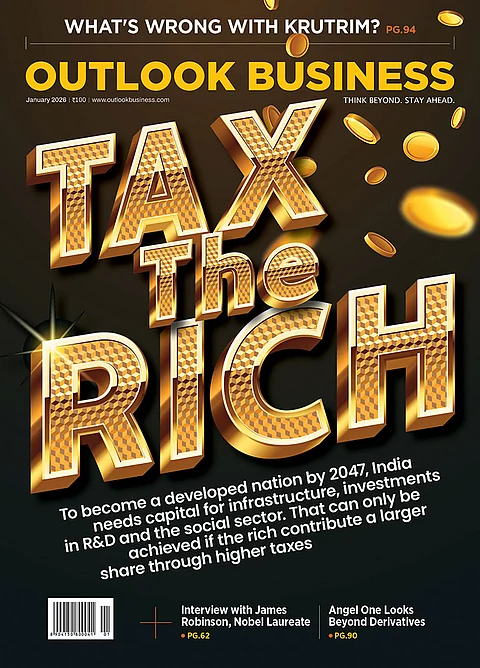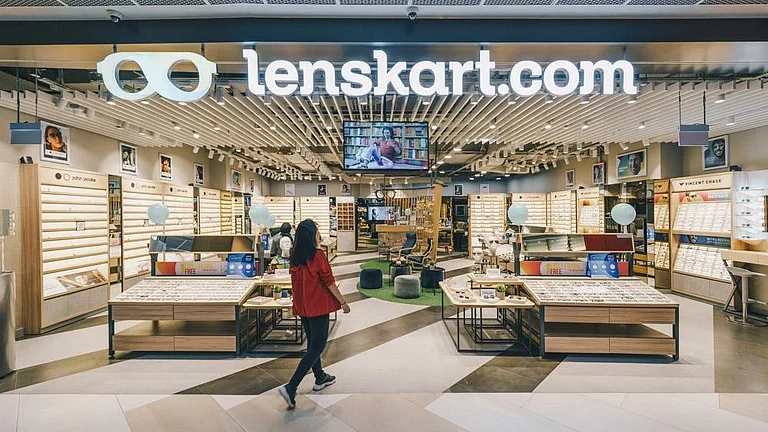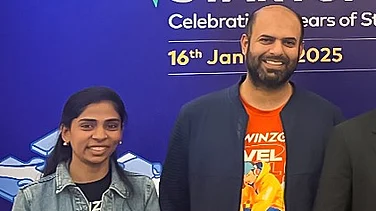Eyewear start-up Lenskart converted into a public company a few weeks ago, ahead of its planned initial public offering (IPO).
The company’s board passed a resolution to change its name from “Lenskart Solutions Private Limited” to “Lenskart Solutions Limited” during a general meeting on May 30, 2025.
The start-up’s founder Peyush Bansal is also reportedly seeking to acquire a 1.5-2% stake in the eyewear retailer, that amounts to around $150 million, from existing investors ahead of the planned IPO, Mint reported.
Lenskart’s IPO will be closely monitored by the start‑up ecosystem to gauge investor interest in consumer brands and as an indicator for other profitable or near‑profitable start‑ups seeking to enter the market after a prolonged dry spell.
“The US $10 billion IPO will undoubtedly test the waters for consumer tech listings in India. Lenskart has several positives going for it: it’s profitable, has strong brand equity and operates a vertically integrated model that sets it apart. But valuations will be under the lens, especially in the current market where investors are prioritising fundamentals over hype. If Lenskart can demonstrate sustained growth with healthy unit economics, I believe the IPO could do well not just in terms of subscription but also in building long‑term public market confidence in new‑age Indian brands,” Karan Agarwal, director at Wilson & Hughes, stated.
The Lenskart story
Founded in 2010 by Peyush Bansal, Amit Chaudhary and Sumeet Kapahi to address gaps in an unorganised eyewear market, Lenskart distinguished itself with affordable, stylish frames sold online, supported by innovative services such as home eye check‑ups, virtual try‑ons and free home trials.
By controlling its value chain from design and manufacturing to distribution, the company maintained stringent quality standards and competitive pricing. However, rising online customer acquisition costs and the challenge of building trust in eyewear purchases demanded a strategic shift.
Recognising that customers valued the tactile experience of trying on frames, Lenskart switched to an omnichannel transformation. It established a network of offline experience stores where consumers could try on eyewear, receive professional eye tests and place orders through integrated digital kiosks.
Behind the scenes, Lenskart unified its inventory, pricing and CRM systems across online and offline channels, ensuring a seamless customer experience whether shoppers browsed on their phones or in person.
By 2024, this hybrid approach had driven Lenskart’s expansion to over 2,500 stores worldwide, spanning markets from Singapore to Saudi Arabia, with omnichannel sales accounting for more than 60 per cent of total revenue.
Financials and Profitability Pressure
As per the MCA filing, in FY24 Lenskart reported revenue of ₹5,610 crore, a 43% increase year-on-year following 142.7% growth in FY23, yet recorded a net loss of ₹10 crore. With a workforce of 3,250 as of March 2024, the company’s significant investments in AI-driven supply chain systems, virtual try-on technology, and its Telangana manufacturing hub have not yet translated into positive profit after tax (PAT).
Despite strong revenue growth driven by its omnichannel expansion and global presence, Lenskart’s ₹10 crore net loss in FY24 underscores the challenge of balancing rapid scaling with sustainable unit economics.
Continued investments in AI-driven supply chain systems, virtual try-on technology, and the Telangana manufacturing hub must generate operating leverage to improve margins.
Meanwhile, competition from established players like Titan Eye Plus and agile health-tech start-ups poses risks to both market share and average selling prices.
Public DRHP
As it prepares for an IPO reportedly targeting a valuation of up to US $10 billion, Lenskart has chosen a public draft red herring prospectus (DRHP) filing over the confidential route favoured by many recent Indian tech‑enabled start‑ups.
By publicly disclosing its financials, growth trajectory and profitability roadmap, Lenskart aims to build brand and investor confidence ahead of its IPO.
“Filing a public DRHP signals that Lenskart is ready to be transparent and that’s a powerful message in today’s market where investors are cautious and want visibility. It also helps build buzz and allows the company to test market sentiment early. Unlike loss‑making start‑ups, Lenskart probably sees more upside in being visible and setting the narrative than waiting in stealth mode. It’s also likely aimed at aligning with Indian regulatory expectations and building trust with the domestic investor base,” Agarwal said.
This transparent approach is also designed to attract a broader base of global institutional investors, including existing marquee backers such as Temasek, KKR, ChrysCapital and SoftBank, while demonstrating operational maturity at a time when markets remain cautious following a series of challenging tech listings.
“Going public with the DRHP helps shape perception early. For a consumer‑facing company like Lenskart, visibility creates momentum. It gives them the chance to tell their story upfront and test market sentiment in real time. It also sends out a strong message of confidence both to the market and to future stakeholders. In some ways, it’s a branding exercise as much as it is a regulatory one,” Navin Hongagudi, managing partner at Elev8 Venture Partners, stated.
Global expansion
Lenskart’s competitive edge stems not only from its retail innovation but also from its aggressive global expansion, substantial technology investments and significant manufacturing scale‑up.
Following its acquisition of Japanese eyewear brand Owndays in 2022, Lenskart established a strong presence across Southeast Asia while simultaneous expansions into the UAE and Saudi Arabia combined offline store openings with e‑commerce integration.
Technology underpins every aspect of its operations: AI‑driven recommendation engines and 3D virtual try‑ons enhance the online shopping experience, computerised eye‑testing devices in stores improve accuracy and proprietary supply‑chain software optimises inventory turnover. These advancements enable Lenskart to deliver personalised service at scale, a critical advantage in an industry where fit and prescription precision are paramount.
“Lenskart’s integrated model gives them an edge. They aren’t just expanding stores; they are expanding capabilities. Investments in tech, automation and manufacturing capacity show a clear intention to build a long‑term, defensible business. Global expansion will have its own challenges, especially around localisation and operations, but their control over the entire value chain puts them in a strong position. It’s the kind of strategy that, if executed well, can become a case study for Indian brands going global,” Hongagudi said.
Expanding Infra
To strengthen its supply chain and cost structure, Lenskart is investing ₹1,500 crore in a state‑of‑the‑art eyewear manufacturing and lens laboratory facility at Hyderabad’s Telangana Medical Devices Park.
Set to become Asia’s largest eyewear factory by FY 26, the facility will incorporate robotic production lines, AI‑driven quality control and sustainable energy solutions, with an annual production capacity of 50 million pairs.
This backward integration enhances margin resilience by reducing dependence on third‑party suppliers while accelerating customisation and delivery times, a critical differentiator in global markets where speed and adaptability are paramount.
Collectively, these initiatives outline a new blueprint for Indian consumer brands aiming to combine profitability with rapid scaling: prioritise unit economics over subsidised growth, integrate advanced technology with physical retail, localise manufacturing to meet global demand and adopt transparency to build investor confidence.
“From an industry lens, we’re seeing more Indian consumer start‑ups investing in global expansion and owning deeper parts of their value chain whether through tech innovation or manufacturing. These moves often indicate long‑term intent to build sustainable, defensible businesses rather than just chasing top‑line growth. That said, success in international markets comes with operational complexities and cultural nuances. For any brand going global, the key will lie in balancing ambition with execution discipline, something public markets will inevitably evaluate post‑listing,” Agarwal said.

































